-
Car Reviews
- All reviews
- Midsize SUVs
- Small cars
- Utes
- Small SUVs
- Large SUVs
- Large cars
- Sports SUVs
- Sports cars
- Vans
Latest reviews
- Car News
-
Car Comparisons
Latest comparisons
- Chasing Deals
Expensive, inefficient and unpleasant to drive, the electric EV5 GT-Line falls short of Kia’s modern product standards
When a brand releases a string of impressive new models, it sets a benchmark against which all future efforts will inevitably be judged. Kia now faces that problem.
The midsize EV6 and three-row EV9 electric SUVs caught many by surprise with their dynamic polish and technical sophistication, standing proudly alongside a growing line-up of capable combustion crossovers. Even the upcoming Tasman diesel ute, with its polarising design, hasn’t shaken our confidence in the brand’s overall direction.
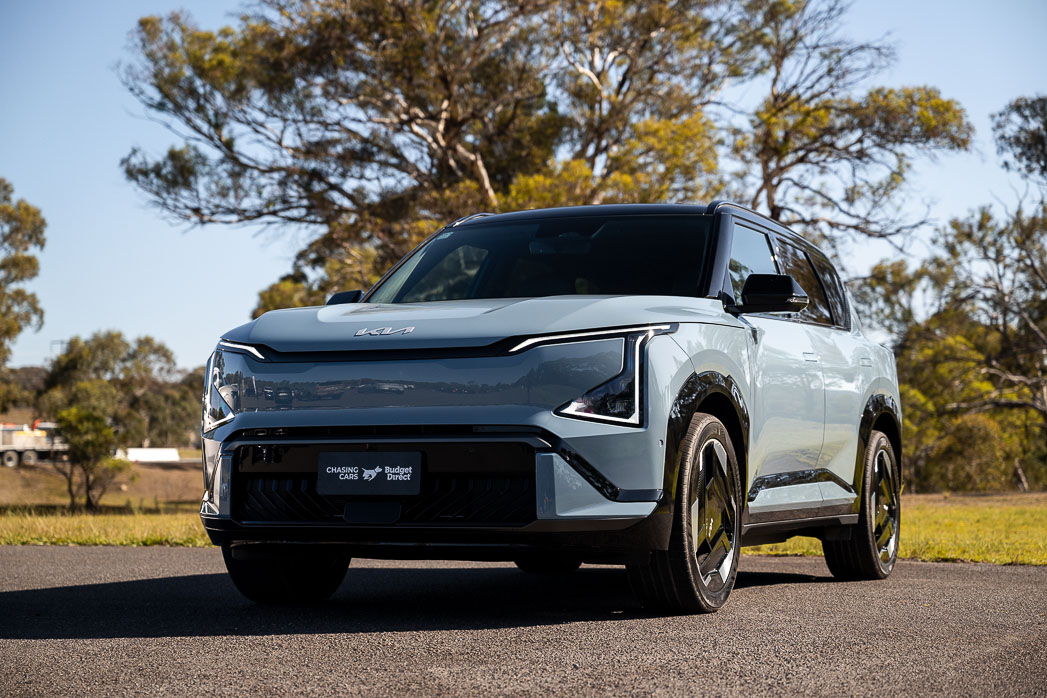
But the EV5 is an outlier. It might share its EV prefix with the EV3, EV6 and EV9, but this boxy 4615mm-long midsizer shares little with its accomplished siblings.
Rather than using the well-regarded Hyundai Kona EV platform (EV3) or full-fat 800-volt e-GMP architecture, the EV5 borrows a diluted 400-volt version of that electrical backbone bolted onto a simplified and electrified version of the Sportage and Sorento platform, called N3-eK.
The cost-cutting doesn’t stop at platform level. The EV5 is the first Kia sold in Australia to be built on a Chinese production line.
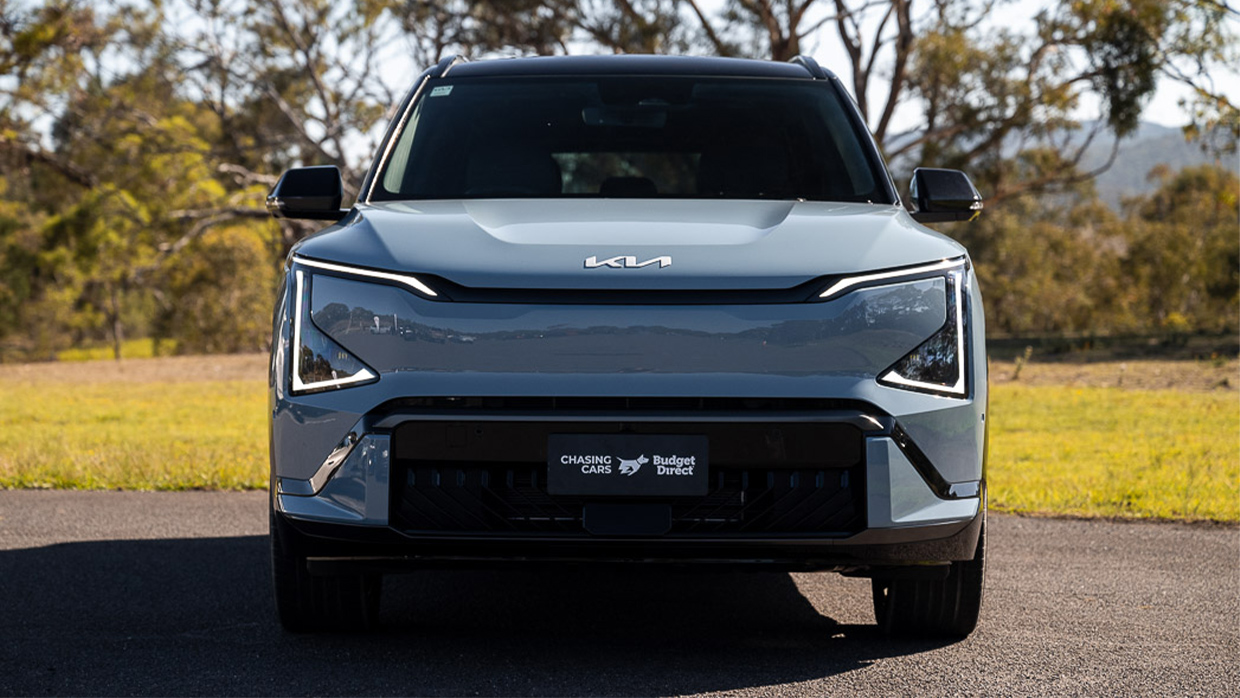
It also uses Chinese batteries—lithium iron phosphate (LFP) packs that are cheaper, heavier, and less energy-dense than nickel-based cells, but more stable. They’re assembled by FinDreams, a subsidiary of arch-rival BYD.
Kia has also made the EV5 fundamentally front-wheel drive to reduce complexity and cost. Two battery sizes are offered, and the smaller-pack EV5 Air (with around 400km range) lands sharply at b driveaway—undercutting the rear-drive EV6 Air by a huge margin. That car starts at $72,590 (about $78,500 driveaway) and offers 528km of claimed range.
Even the flagship EV5 GT-Line AWD we’re testing comes in cheaper than the entry-level EV6—at $75,990 driveaway. Like the mid-tier Earth ($64,770), GT-Line adds a smaller rear motor and a large 84kWh usable battery that’s supposed to deliver 470km of range.
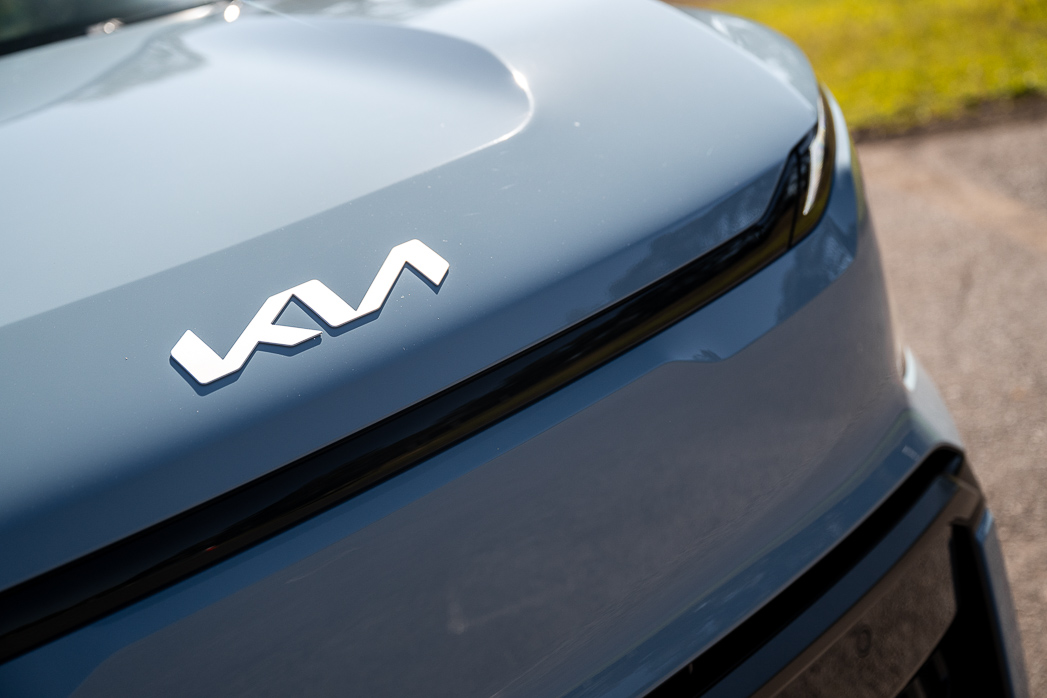
But there’s a catch. While the EV5 undercuts Kia’s other EVs, it doesn’t take long to realise that the EV6 and EV9 aren’t price-competitive. The segment’s sales leader, the newly updated, China-built Tesla Model Y is bigger, better equipped, and offers 466km of range from $58,900, before on-roads.
Even premium brands are starting to punch down into EV5 territory. Mini has lobbed its bigger, German-built Countryman EV into the mix from $64,990 before on-roads. And that’s before you consider capable Chinese newcomers like the Xpeng G6, which starts at $54,800.
We’ve started this review with pricing, because that’s the EV5’s supposed advantage. This car is meant to be a clever play from Kia—cutting manufacturing costs while still delivering the design, engineering and value we’ve come to expect from the brand’s high standards and long warranty. At the very least, it should drive properly. Right?

Sadly, no. The EV5 isn’t cheap enough—and it doesn’t drive well enough, either. Yes, it’s well-sized and packaged for families, with decent infotainment and connectivity. But core weaknesses in efficiency, ride and handling, and driver assist tuning threaten to damage Kia’s growing EV reputation.
A national driveaway price campaign for the Kia EV5 remains in force, with the GT-Line sitting atop the four-trim tree. Costs lift as buyers jump up the range, with the Air Standard Range’s initially attractive $56,770 sticker rising dramatically to our GT-Line tester’s $75,990 all-in price.
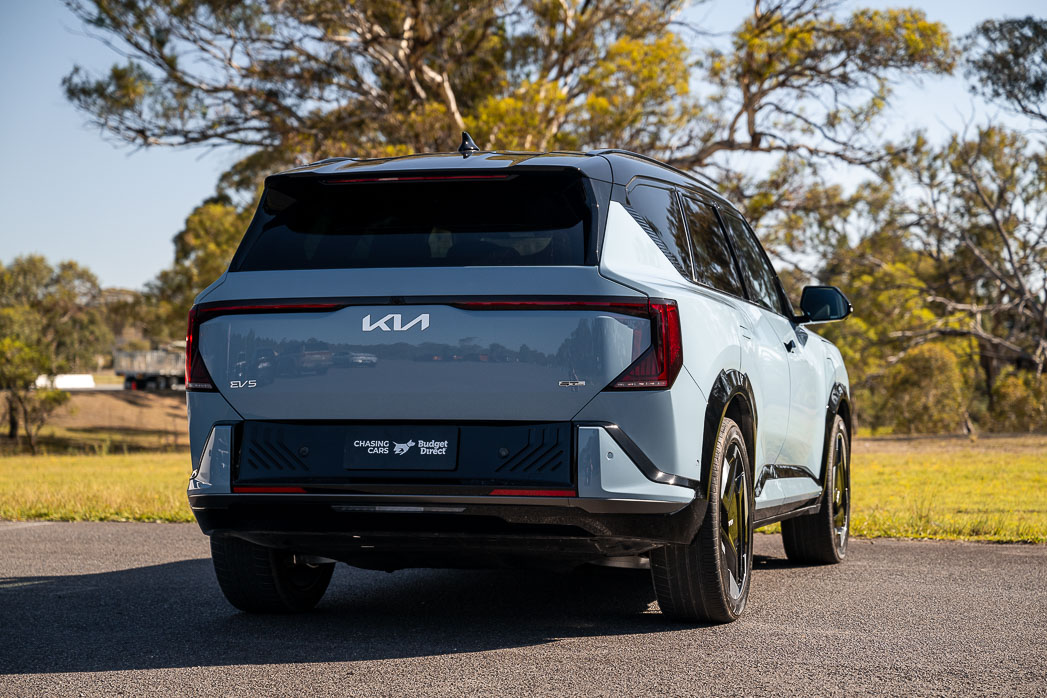
The EV5 GT-Line is a midsize electric SUV with a large battery, reasonably generous equipment and a respectably powerful dual-motor powertrain. That means it competes with the following vehicles at the time of writing—prices are before on-road costs, unless indicated:
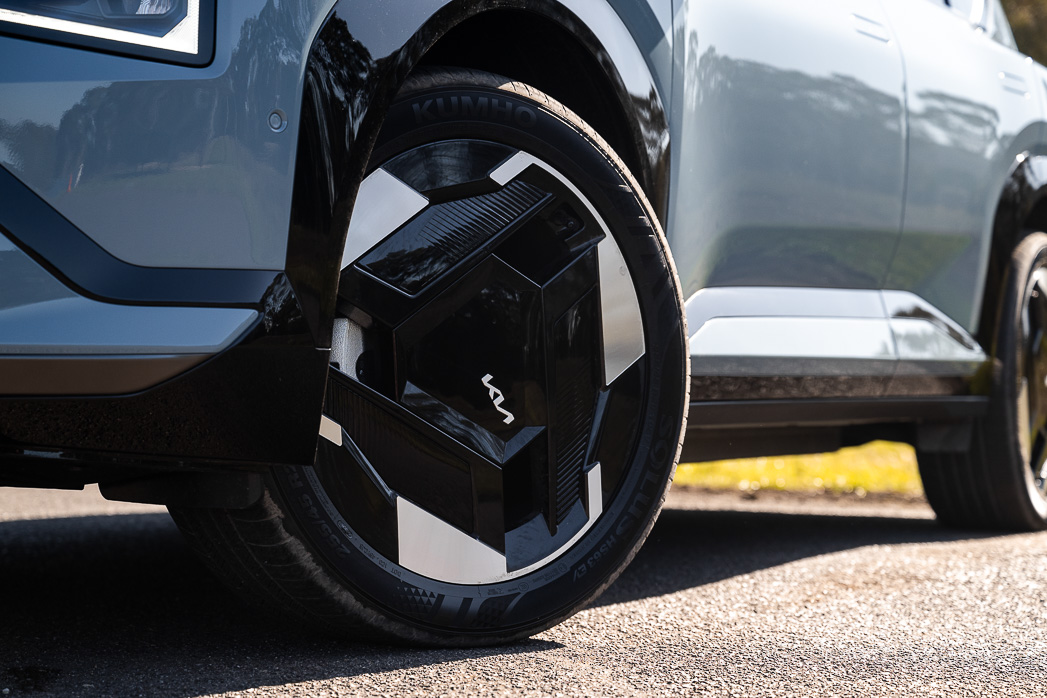
The EV5 GT-Line includes the following standard kit in Australia:
Compared to rivals, Kia does smartphone connectivity, cooled seats and effective climate control well. Notable omissions here include charging cables (available as accessories), but some rivals (notably the recently refreshed Tesla Model Y) pack more sophisticated suspension tech and superior audio for similar or less money.

Optional extras for the GT-Line are limited to paint colour. Clear White (with a matching roof) is the only standard colour; one-tone hues in Magma Red, Tide Blue or Starry Night Black cost $600, while two-tone Snow White Pearl, Iceberg Green, Frost Blue, and Shale Grey (all paired to a black roof) attract a $775 premium.
Unlike the mid-tier EV5 Earth, which can be paired with lush (but no-cost) Nougat Beige seats under some exterior colours, the GT-Line is only available with Smoky Black vinyl.
We’ve come to know how most modern Kias drive. They tend to fall into one of two camps: competent and compliant (like the combustion Sportage and Sorento), or enjoyable and sophisticated (like the EV6 and EV9). The new EV3, fresh off the boat for Australia, joins the latter group.
Which makes it even more perplexing that the midsize EV5 — entering the most hotly contested part of the EV market— misses both camps. Its ungainly handling sees Kia chalk up a rare dynamic misstep, one that even a local suspension tune hasn’t been able to salvage.
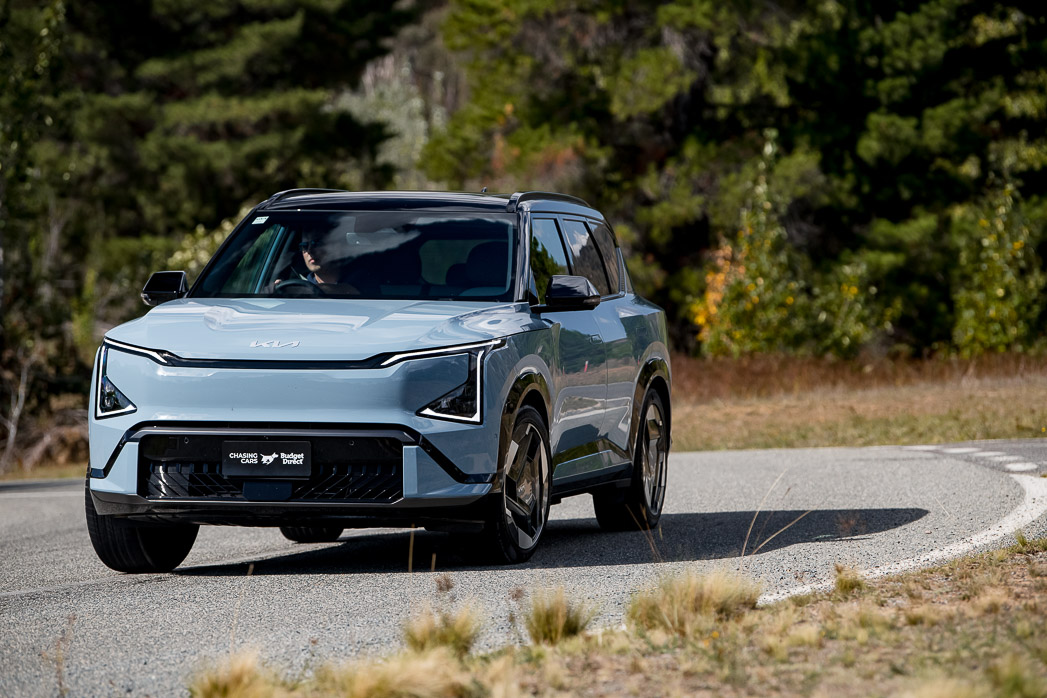
The EV5 is available in single-motor (Air) or dual-motor form (Earth and GT-Line), with two lithium iron phosphate battery sizes: 64.2kWh usable for the Air Standard Range, while all other variants get an 84.0kWh usable battery. Having tested the full EV5 range we reckon less is more, with the light, front-drive Air feeling the least compromised of the lot.
At the other end of the range, a purchase becomes harder to justify. The dual-motor EV5s are at least respectably powerful, with 230kW and 480Nm combined. The AWD powertrain never feels sluggish or excessive — its 6.3-second 0–100km/h claim is about right for a family EV.
But with about two-thirds of the power driving the cornering wheels torque steer is clearly present in the dry and even more pronounced in the wet. The GT-Line’s wider 255/45 R20 tyres help manage this better than the Earth AWD’s narrower setup.
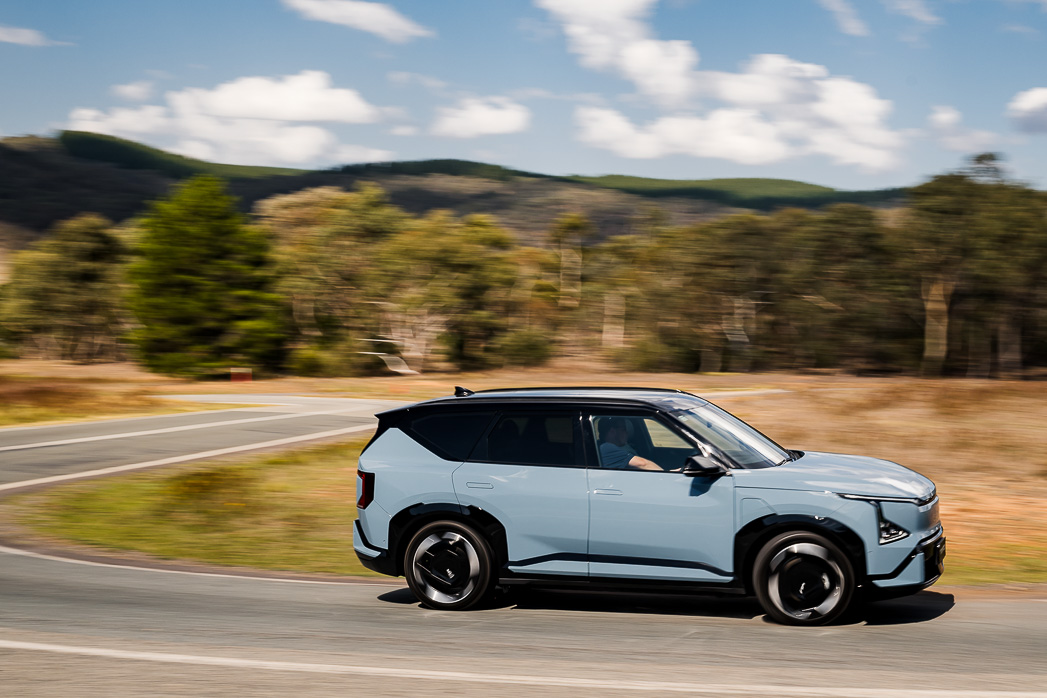
Throttle response is fine, but every control surface in the EV5 feels dulled—like there’s a layer of treacle between driver and car. It lacks the intuitive flow of e-GMP-based models like the EV6 and EV9, which benefit from clearly superior hardware and software.
Prod the throttle and there’s a noticeable delay before anything happens. Lift off in one-pedal mode, and again—pause—then regen kicks in, with the body eventually leaning forward as speeds slow.
Low-speed ride quality is acceptable in town, though there’s a firm edge thanks to the low-profile tyres and 20-inch wheels, which struggle to absorb square-edged potholes and joins.
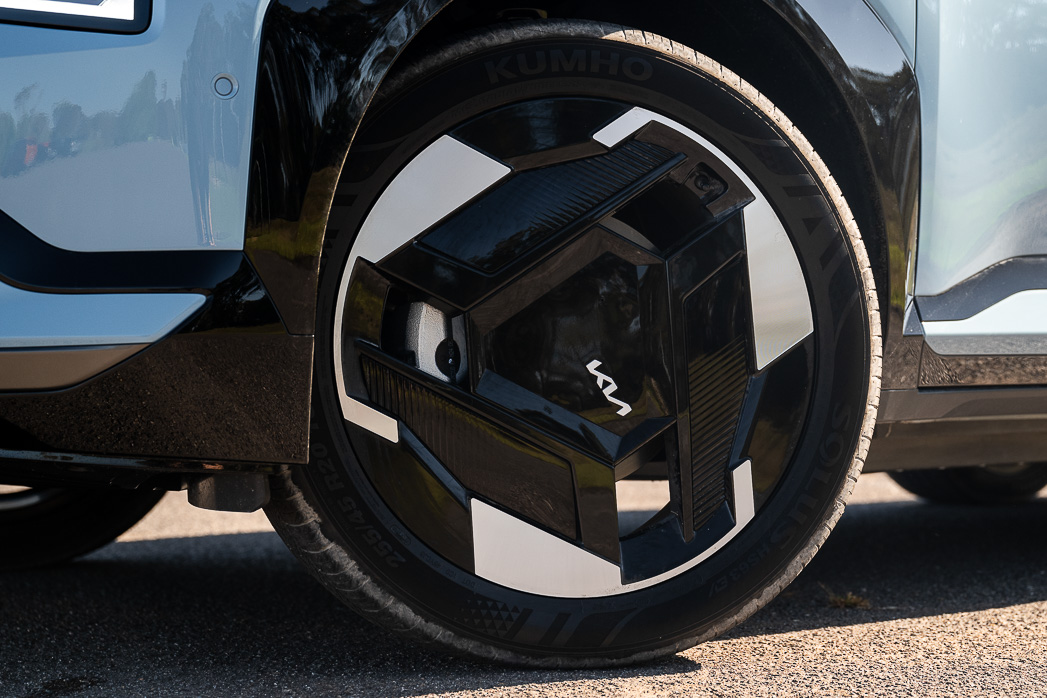
Body control falls apart as speeds rise and the road gets twisty or rough. Hit a mid-corner bump and the EV5 bobs, floats, and pitches as it loses composure.
The dampers struggle to reset between hits, sometimes running out of talent entirely and causing the EV5 to skip sideways. When that happens, the rear can unload and go light—just as stability control shows up a half-step late.
Put simply, the EV5 GT-Line is unpleasant on poor surfaces and winding roads. That might not matter for urban rideshare duty — it’s already popular for that kind of driving in Sydney and Melbourne — but take it on a B-road and the Kia can be genuinely nauseating.
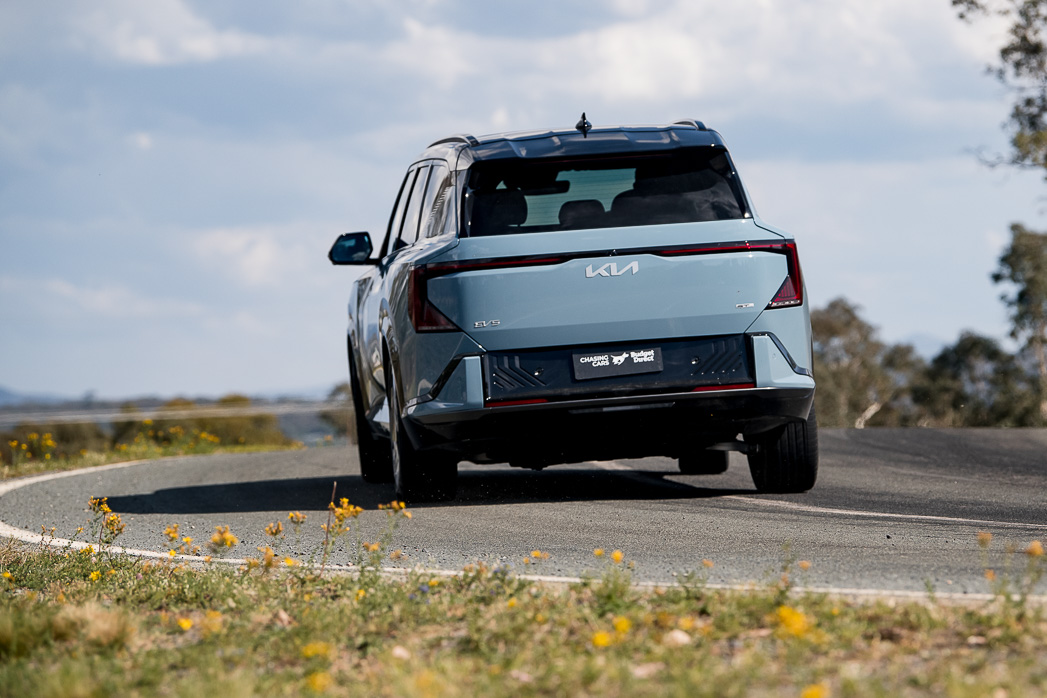
Rivals don’t behave like this — even the more forgettable ones. We drove the XPeng G6 over the same Australian Capital Territory urban and country testing loop on the same day, and it handled the route with considerably less fuss. Others, such as the Skoda Enyaq, are just outright excellent in these kinds of settings.
A spacious and well-packaged interior is the EV5’s strongest suit. It looks boxy — though not unattractive — and its upright shape hides one of Kia’s best efforts yet when it comes to maximising room. First- and second-row passengers have plenty of space, and you can carry five if needed.
Spend time inside the EV5 — even this flagship GT-Line — and it’s clear that this model has been built to a price, if not necessarily in a cheap-and-nasty way. Beyond the key touchpoints like the artificial leather steering wheel and seats, most materials are hard and durable, though the plastic graining is decent enough.

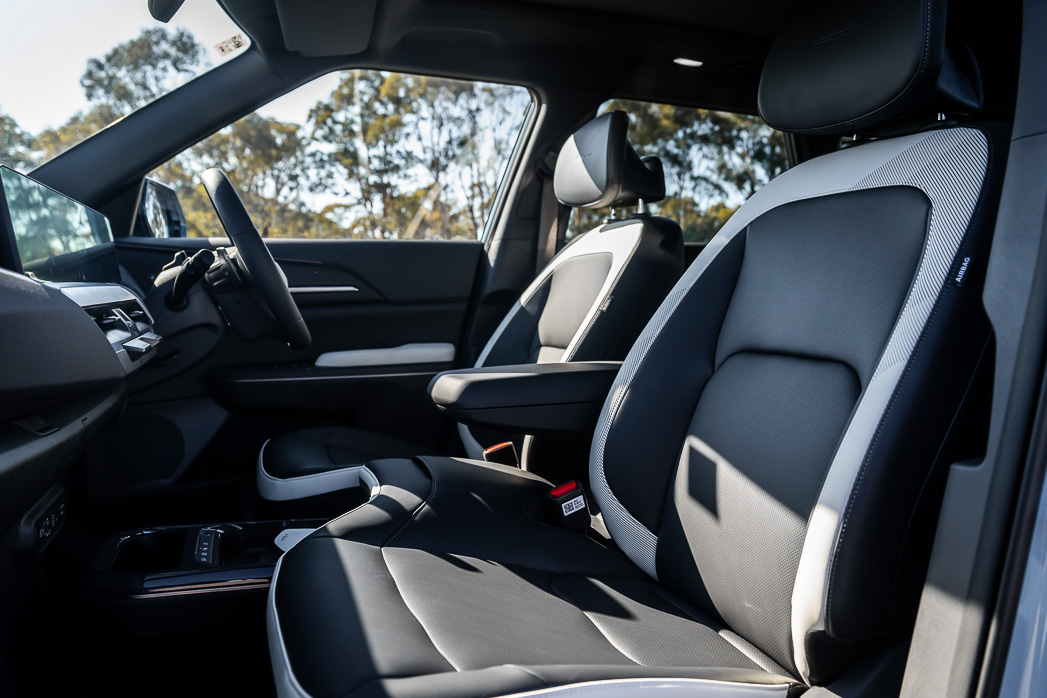
The only problem with the EV5 being built to a price is that it’s not cheap! As we noted in the Value section, this Kia isn’t among the most affordable cars in the class—and while Chinese rivals like the XPeng G6 and BYD Sealion 7 don’t pretend to be luxurious, they still manage a more consistent veneer of softness inside.
Still, we like the artfully embossed — and pleasingly squidgy — dashboard. The use of geometric elements and interesting shapes lifts the EV5’s cabin experience. Ergonomics are mostly sound: the driving position is high with excellent visibility, and both the shortcut-laden steering wheel and column-mounted shifter fall easily to hand.
The sensible dash layout includes two crisp 12.3-inch displays, split by a 5.0-inch climate panel that feels like an afterthought—it’s hidden behind the steering wheel rim for many drivers. We’re always in favour of separate climate controls, but these would be better as physical buttons, mounted below the screens.
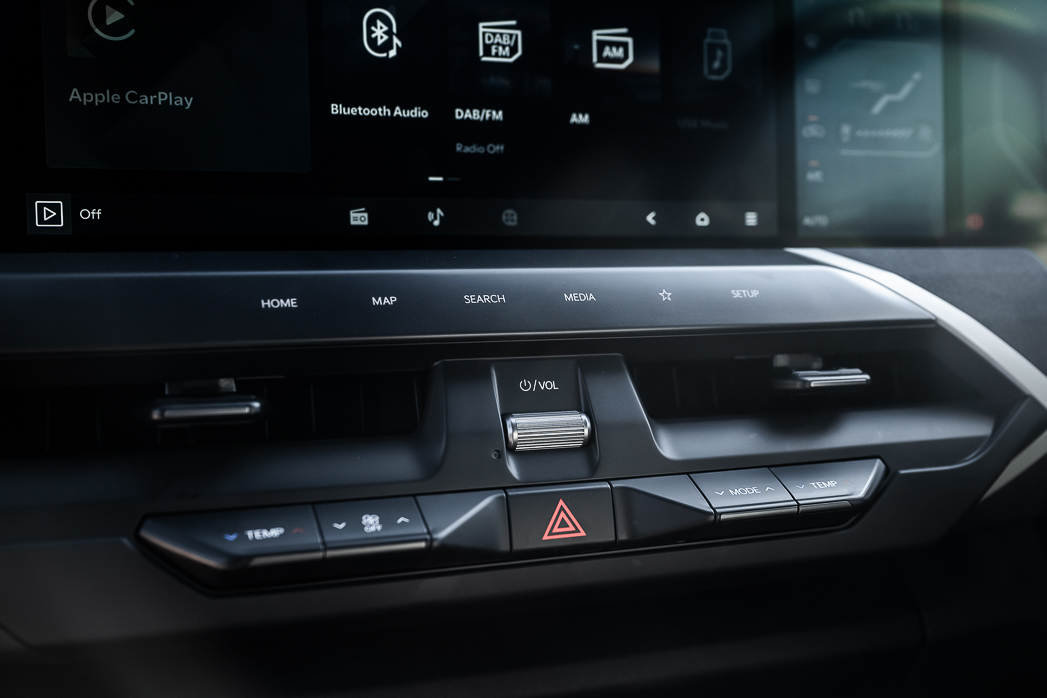
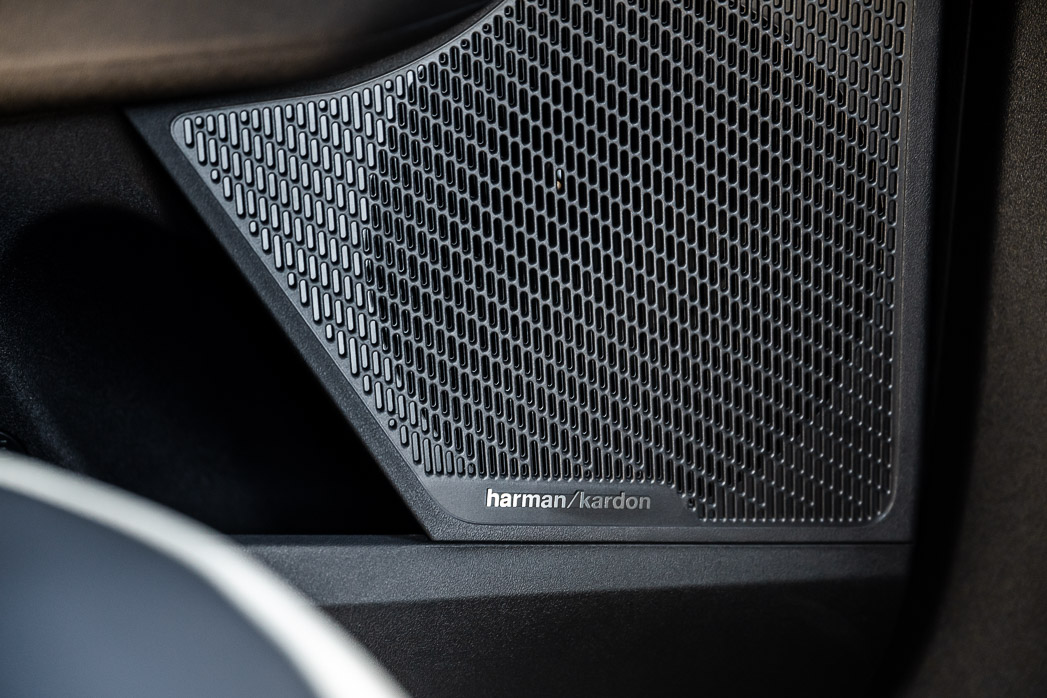
Kia’s CCNC infotainment system has a logical layout, though most users will opt to pair their smartphone using wireless Apple CarPlay or Android Auto.
There are four USB-C ports for charging, while the GT-Line’s Harman Kardon-branded audio system delivers only middling clarity from its eight speakers.
Storage for odds and ends is generous, and the flat floor—thanks to the EV5’s dedicated architecture—helps create a strong sense of space. We’re also fans of the panoramic sunroof: while many EVs have fixed glass panels, the GT-Line’s actually opens (a rarity) and includes a powered sunblind to reduce glare. Excellent.
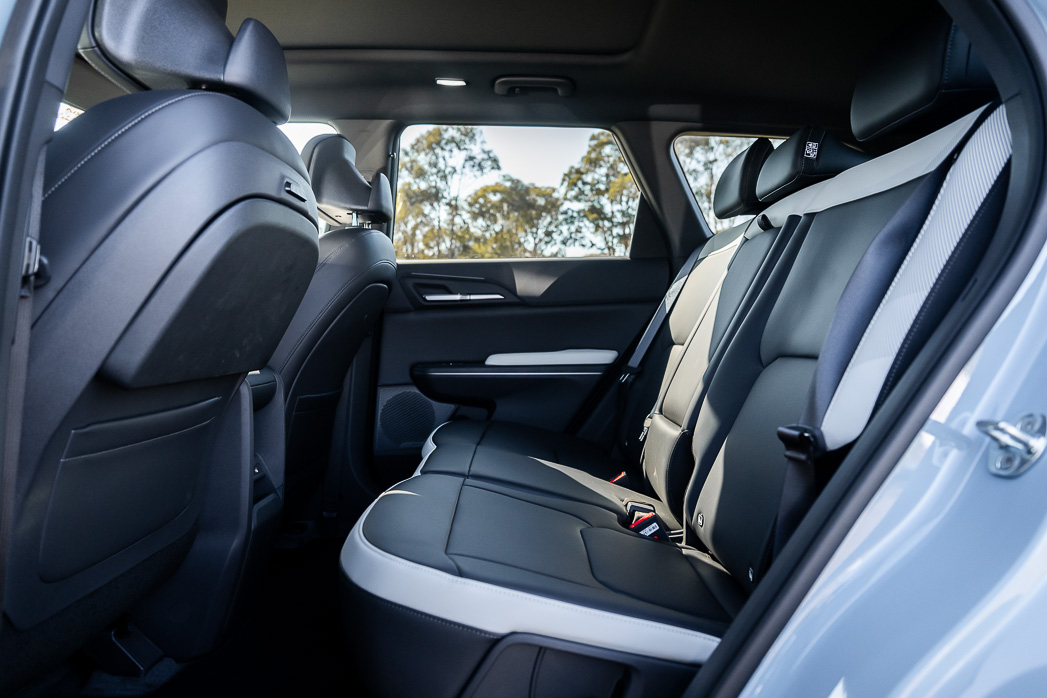
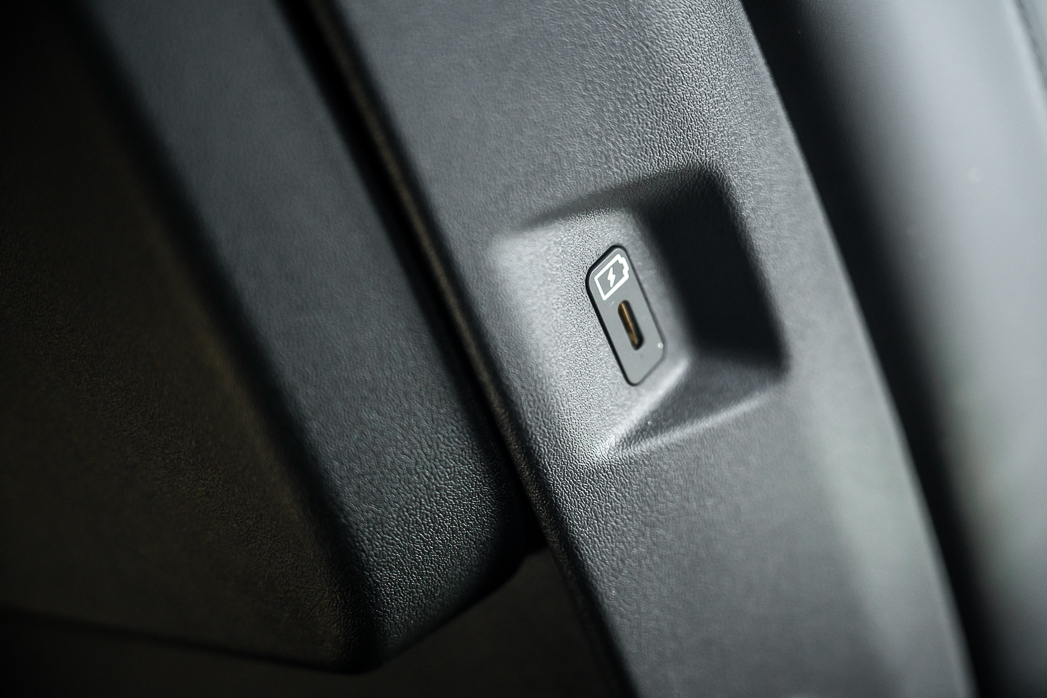
In the back seat, space remains generous with excellent legroom. The second row doesn’t slide on rails—which would be a handy feature—but it does recline, and seat-back USB-C charge points keep devices powered up on the move.
The powered tailgate opens hands-free if you wait behind it with the key in your pocket for a few seconds (or you can simply push the relevant button). Once open, it reveals a large, square space.
Capacity is rated at 513 litres to the window line—decent for an SUV of this relatively compact size.
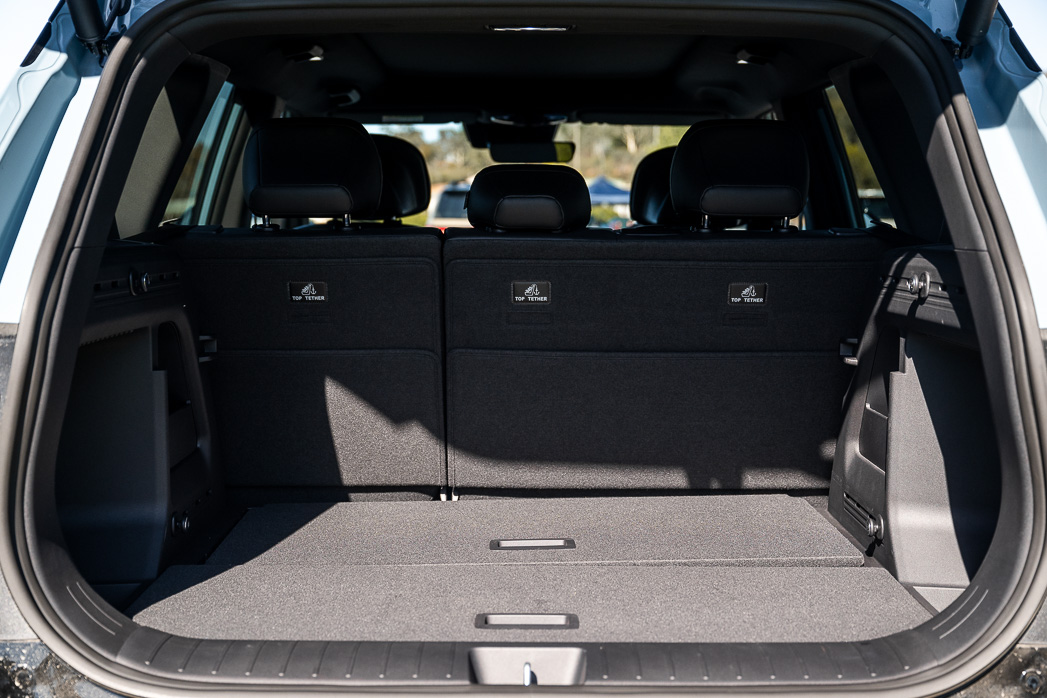
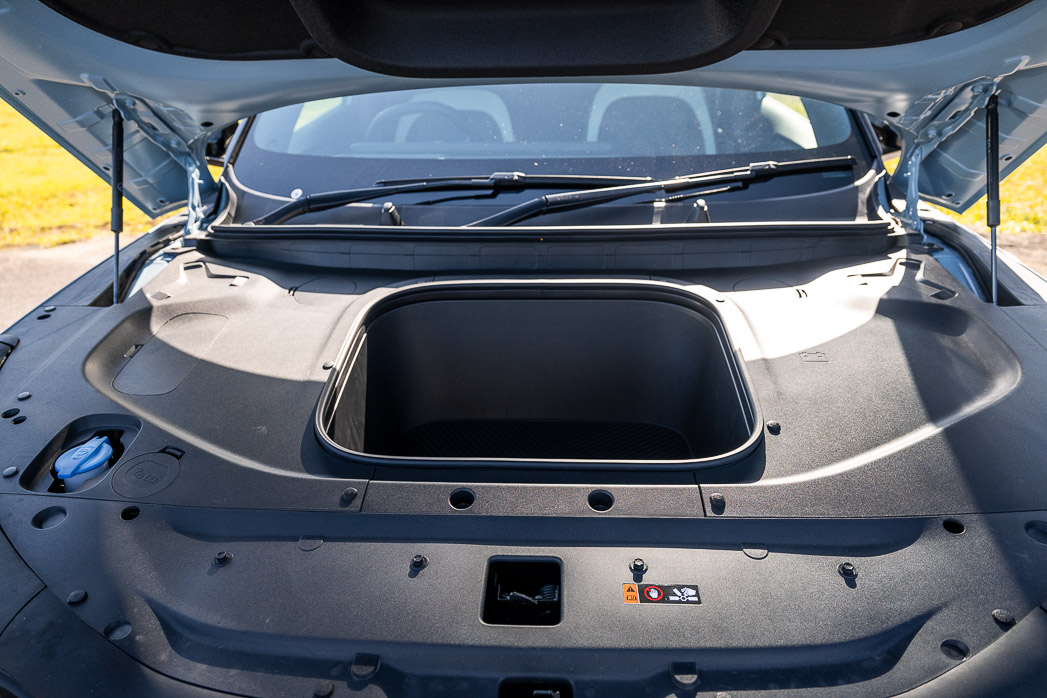
It’s a generous space, though we’d suggest adding a net—bags slide around easily on the low-pile carpet, knocking into the hard plastic cargo walls. There’s also some underfloor storage and a novel (if slightly over-engineered) split-level organiser that lacks a clear purpose.
There’s also a frunk, opened via a traditional bonnet release in the driver’s footwell. It adds another 67 litres of space—perfect for storing charge cables, which aren’t included in the purchase price but can be bought as accessories or on the aftermarket.
All too often, Chasing Cars testing reveals vehicles with high safety scores — but semi-autonomous features that simply don’t work well in the real world. The EV5, which scored five stars from ANCAP, isn’t the worst (or only) offender—but at least two of its safety systems are oversensitive, while another behaves haphazardly at best.
The biggest problems here are the speed limit warning and driver distraction detection systems. Both regularly misread real-world scenarios and neither needs to be militant as it is to tick the five-star box.
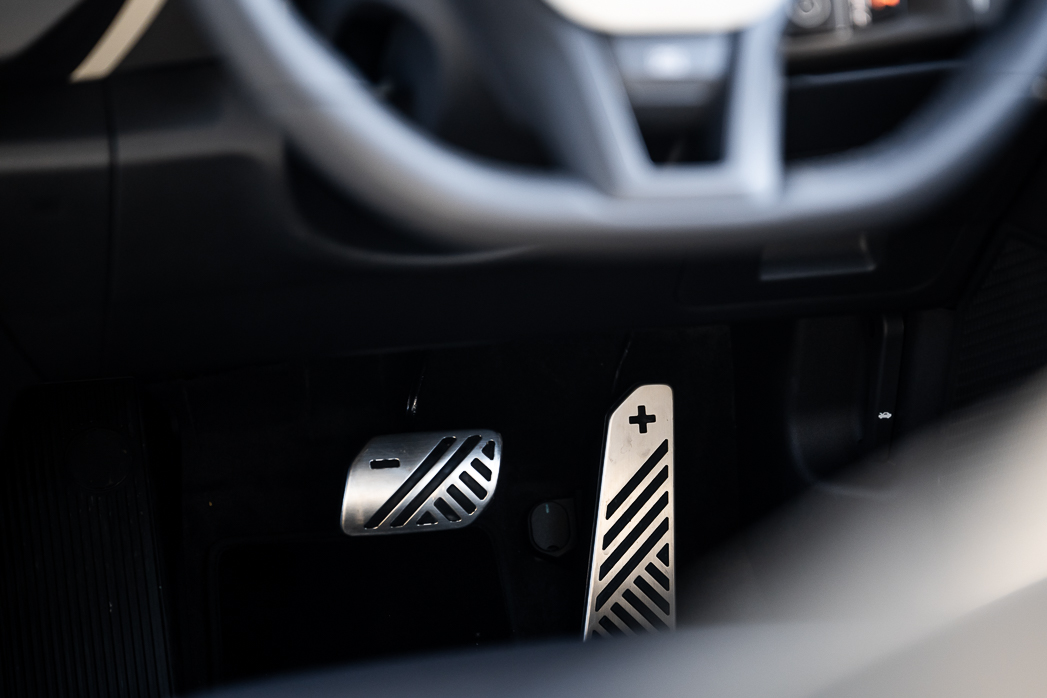
Take the speed warning system. It uses a front-facing camera to read signage—and if you exceed the limit by even 1km/h, it sounds off with loud bongs inside the cabin. Leaving the Chasing Cars garage means passing a private 5km/h sign in the carpark. Pull out onto a 50km/h suburban street, or the nearby 80km/h expressway, and it continues to bong incessantly.
Within moments, you’re driven to distraction. Then comes the hunt to disable the system—Kia’s reduced this to four presses, but that’s still four too many. Australian law doesn’t require this. In Europe, where speed warnings are mandatory, some brands offer a simple one-button deactivation.
Then there’s the driver distraction monitor—a pod perched on top of the steering column, constantly watching your eyes. In theory, that’s fine. But even a quick glance at the trip computer or next nav instruction can trigger more angry bongs. So off you go, digging through menus to switch off another system—an act that’s distracting, and arguably dangerous, in itself.

We also noted that the EV5’s lane-centring system behaves inconsistently—sometimes tugging at the wheel even when the driver is holding a reasonable line. Most Kias are fine in this department, so the lack of polish here really stood out.
Back to those quantitative ANCAP scores—the EV5’s results sheet looks admirable:
On the plus side, the adaptive cruise control works smoothly, and the blind spot camera system remains best-in-class. It’s a shame those cameras haven’t trickled down the EV5 range—they’re exclusive to the GT-Line. Also worth noting: there’s no reverse AEB.
Not all EVs are created equal. The thirsty ones can actually cost as much—or more—to run than hybrids or efficient petrol cars, especially on road trips or if you don’t have access to cheap overnight charging at home.
That’s the camp the dual-motor EV5 GT-Line falls into. Its energy consumption is outrageous—particularly on the highway, where 110km/h cruising and blunt aerodynamics conspire to drag efficiency way down.
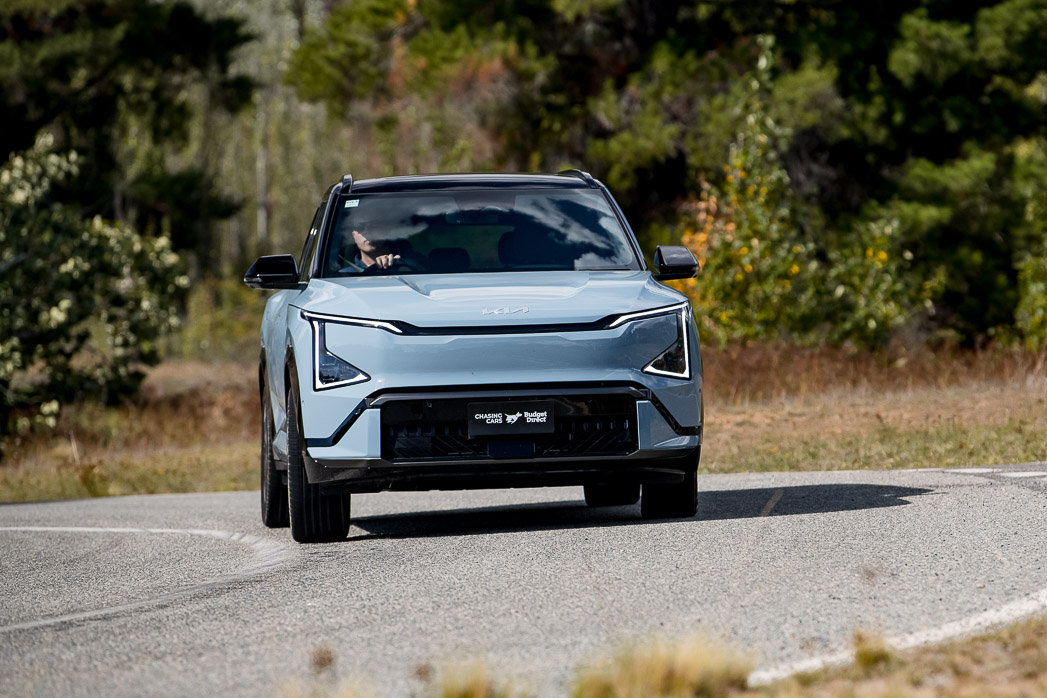
The larger of the EV5’s two batteries packs a usable 84.0kWh—about 12 percent more capacity than a Tesla Model Y Long Range. But the lithium iron phosphate chemistry, while safer, comes with a trade-off: LFP packs are heavier and less energy dense.
It’s a perfect storm. On the highway, our EV5 GT-Line averaged 25.0kWh/100km—delivering a real-world road trip range of just 336km from full to flat. But few drivers run to empty, meaning the EV5 GT-Line’s actual driving range sits below 300km. A comparable Tesla Model Y Long Range, with more power, will do over 100km more while using just 16.0kWh/100km.
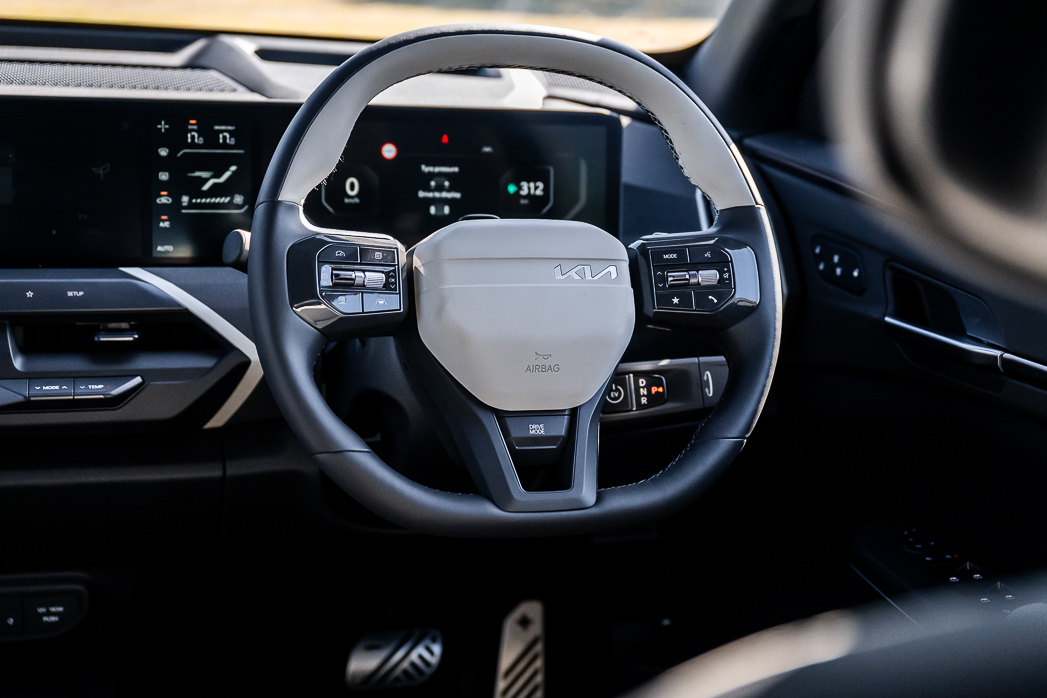
Some EVs make up for poor efficiency with ultra-fast charging. Not the EV5. Its watered-down e-GMP platform runs on a 400-volt system—and a slow one, at that. Peak speed is 140kW, but a 10–80 percent session takes 37 minutes and averages just 94kW, replenishing 235km of highway range.
Inefficiency on the highway coupled with slow(ish) charging wastes your time—but it is also costly. At 25.0kWh/100km, every 100km on the highway is costing $16-20 in the EV5. A hybrid or diesel Sorento using 7.0L/100km would cost perhaps $13-16. Similar, sure—but they’ll drive much further on a tank.
In town, consumption improves—but it’s still thirsty, averaging 21.0kWh/100km for a low-speed range of around 400km against its claim of 470km combined.
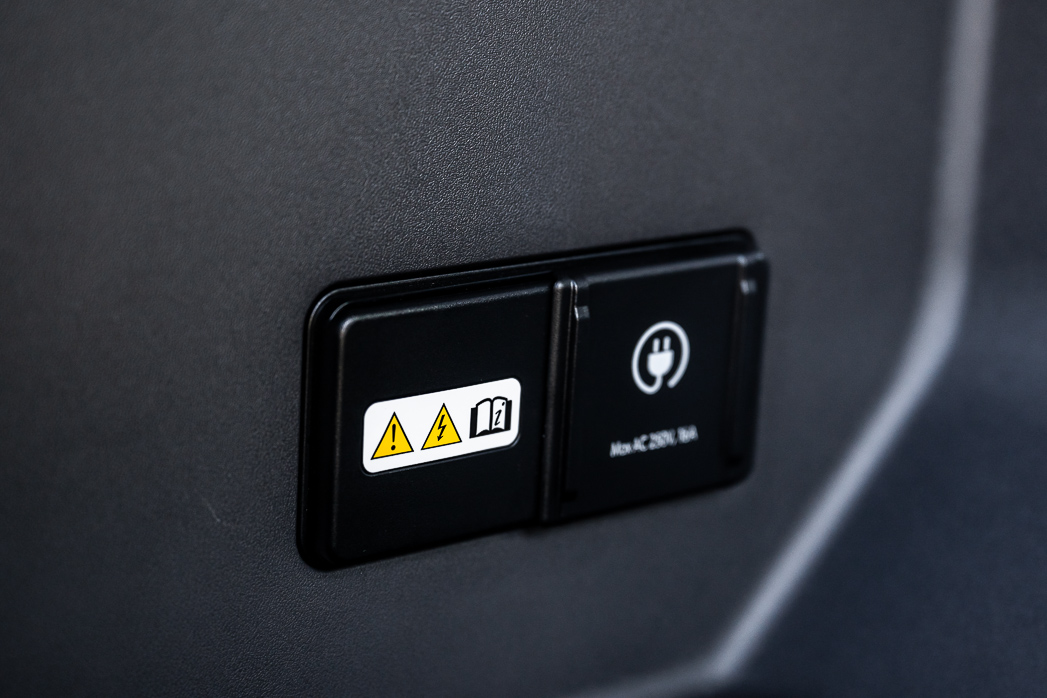
On the plus side, servicing isn’t expensive. Kia offers pre-paid plans for three, five, or seven years, with the five-year/75,000km pack costing $1535 ($307 per year). Still, it’s unusual for an EV to require annual servicing—and that’s exactly what the EV5 demands.
Kia’s seven-year, unlimited-kilometre vehicle warranty remains generous. However, the EV5’s high-voltage component is only covered for seven years or 150,000km—slightly shy of the eight-year, 160,000km benchmark common in this class.
Simply put, we expect more from Kia than what the EV5 delivers. We know Kia can build great electric cars. The larger EV6 and EV9—both based on a more sophisticated and expensive platform—prove the point, delivering strong dynamics, good efficiency (in the EV6), and clever packaging (in the EV9).
Even the brand-new EV3—a size-down alternative to the EV5—is more polished, running on the good-to-drive Hyundai Kona architecture.
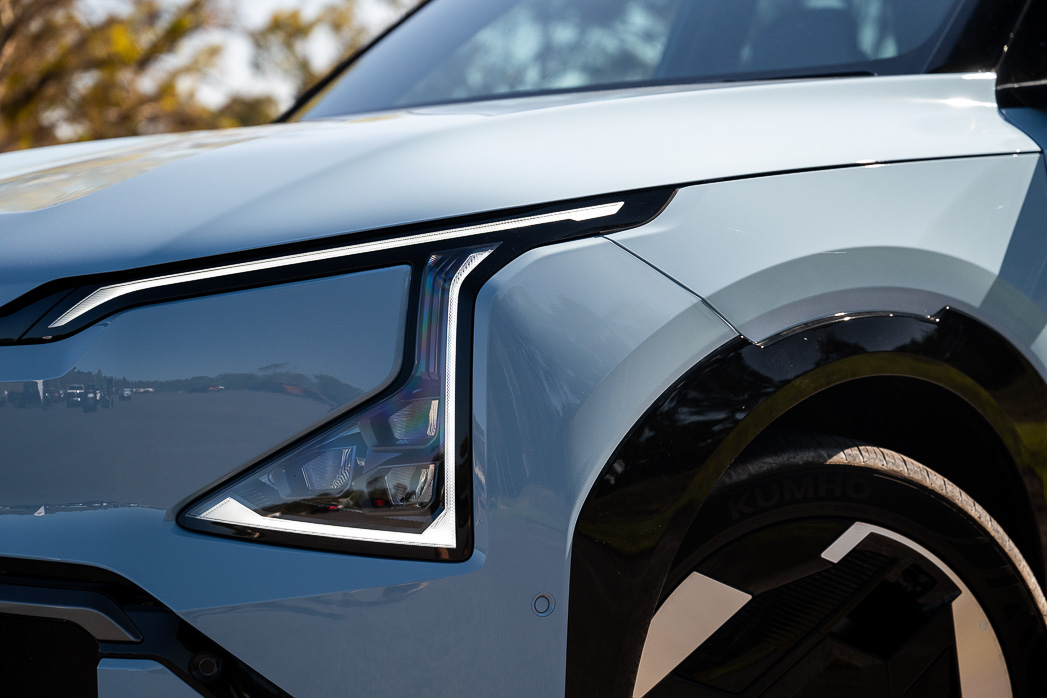
What’s gone wrong with the EV5? We’re still not entirely sure—though it may have something to do with it being the only Kia built on a third, separate EV platform.
At minimum, the EV5’s suspension and safety systems need a thorough rethink—because the Australian tuning effort hasn’t delivered a breakthrough despite talented people attempting to do so locally.
A rework might still happen. The EV5 hasn’t launched in Europe yet. It will soon, and European dynamic tastes align closely with Australia’s—sloppy ride and handling will be just as unacceptable over there as they are here.
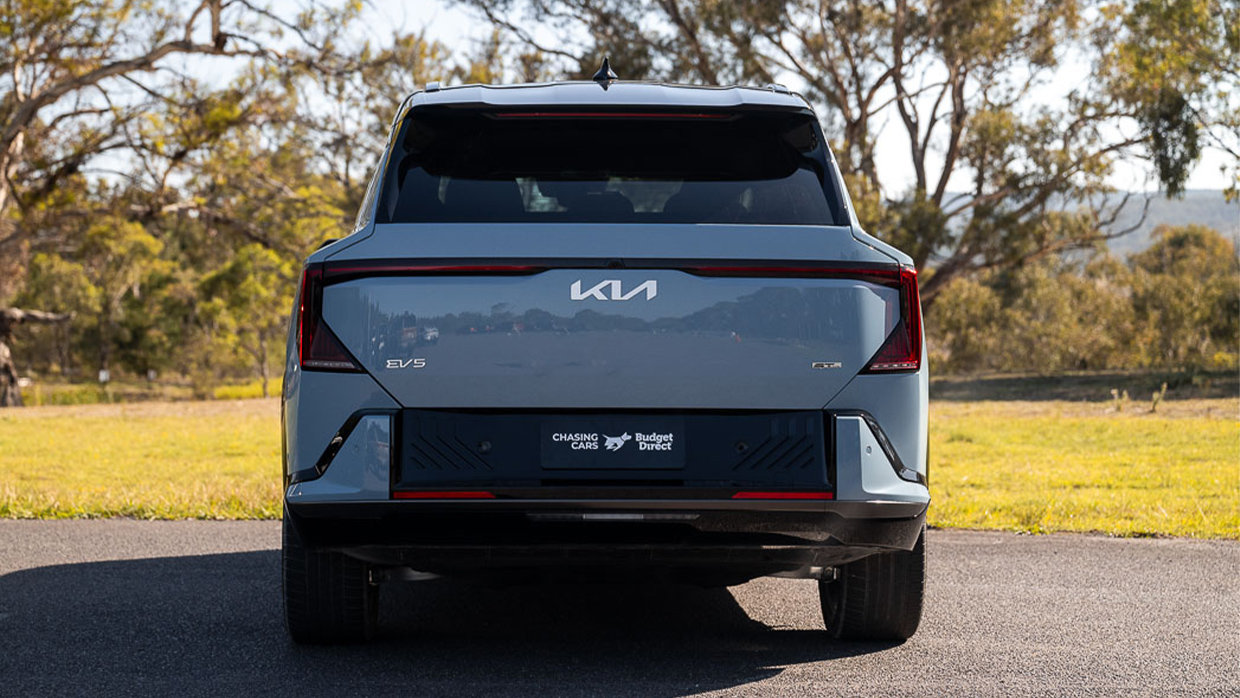
The relatively high price of the EV5 — especially in GT-Line form — puts it well above the cost of the now-improved Tesla Model Y. That makes the purchase hard to justify.
Until such an upgrade arrives — and despite Kia’s solid reputation, decent cabin tech and admirable packaging — we’d steer clear for now.Should Kia make the changes we’re asking for, Chasing Cars will be first in line to reassess this SUV and its road test score.
Key specs (as tested)
About Chasing cars
Chasing Cars reviews are 100% independent.
Because we are powered by Budget Direct Insurance, we don’t receive advertising or sales revenue from car manufacturers.
We’re truly independent – giving you Australia’s best car reviews.
The estimate provided does not take into account your personal circumstances but is intended to give a general indication of the cost of insurance, in order to obtain a complete quote, please visit www.budgetdirect.com.au. Estimate includes 15%^ online discount.
^Conditions Apply
Budget Direct Insurance arranged by Auto & General Services Pty Ltd ACN 003 617 909(AGS) AFSL 241 411, for and on behalf of the insurer, Auto & General Insurance Company Limited(ABN 42 111 586 353, AFSL 285 571).Because we don’t know your financial needs, we can’t advise you if this insurance will suit you. You should consider your needs and the Product Disclosure Statement before making a decision to buy insurance. Terms and conditions apply.
Indicative quote based on assumptions including postcode , 40 year old male with no offences, licence suspensions or claims in the last 5 years, a NCD Rating 1 and no younger drivers listed. White car, driven up to 10,000kms a year, unfinanced, with no modifications, factory options and/or non-standard accessories, private use only and garaged at night.
^Online Discounts Terms & Conditions
1. Discounts apply to the premium paid for a new Budget Direct Gold Comprehensive Car Insurance, Third Party Property Only or Third Party Property, Fire & Theft Insurance policy initiated online on or after 29 March 2017. Discounts do not apply to optional Roadside Assistance.
2. Discounts do not apply to any renewal offer of insurance.
3. Discounts only apply to the insurance portion of the premium. Discounts are applied before government charges, taxes, levies and fees, including instalment processing fees (as applicable). The full extent of discounts may therefore be impacted.
4. We reserve the right to change the offer without notice.